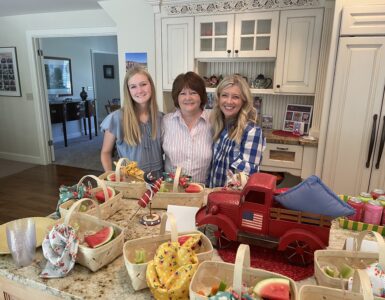Part of life is experiencing discomfort.
Discomfort is an inevitable part of life, and as parents, it can be particularly challenging to watch our children navigate through tough times. The instinct to protect and solve their problems is strong, but Eli Harwood, a licensed therapist and author of “Raising Securely Attached Kids,” suggested a different approach.
With over a million followers across Instagram & Facebook, Eli, known as the Attachment Nerd, shared how parents can become more comfortable with their child’s discomfort.
The Importance of Resilience
Eli emphasized that resilience is one of the most crucial skills we can teach our children. “We all experience struggle, challenges, suffering… and as parents, even though we really want to, we can’t prevent our children from experiencing those things,” she explained. Instead, parents should focus on preparing their children with the skills needed to bounce back after setbacks.
Support and Confidence: The Dual Pillars
Children need two primary things from their parents: support and confidence. Eli elaborated, “They need to feel they are not alone in their struggles, and they need to feel they have what it takes to figure this out and get through it.” This balance helps children feel supported while also believing in their own abilities.
Comfort vs. Comforting
A key distinction Eli made is between offering comfort and making children feel comfortable. Comforting involves being calm, present, and empathetic, which helps children regulate their emotions and return to a state of reflection. On the other hand, prioritizing comfort often stems from a desire to avoid dealing with their feelings. “When we try to fix it or shut it down, we rob our kids of their ability to learn how to move through hard things,” Eli warned.
Practical Advice for Parents
Eli offered practical advice for parents to avoid swooping in and solving their children’s problems. She acknowledged that sometimes intervention is necessary for practical reasons, but emphasized the importance of allowing children to practice dealing with discomfort. “If I’m jumping in and rescuing, I’m actually getting in the way of my child getting the practice they need,” Eli noted.
Real-Life Examples
Eli provided examples for different age groups:
- Toddlers: When a toddler struggles with zipping their coat, instead of doing it for them, parents should acknowledge their frustration and offer support while allowing them to try.
- Tweens: For tweens dealing with friendship conflicts, parents should listen and help them brainstorm solutions rather than giving direct advice.
- Teenagers: Teenagers, or “practice grownups,” should face the consequences of their actions. For instance, if they forget to turn in a form for driver’s ed, they should experience the delay rather than having parents fix it for them.
Standing Near, Not In
Eli’s mantra for parents is to “stand near, don’t stand down or stand in.” This means being present and supportive without taking over. “I got you and you got you,” she said, encapsulating the balance of support and independence.
For more insights from Eli Hartwood, you can follow her on Instagram and Facebook at @attachmentnerd or visit her website, attachmentnerd.com.















Add comment